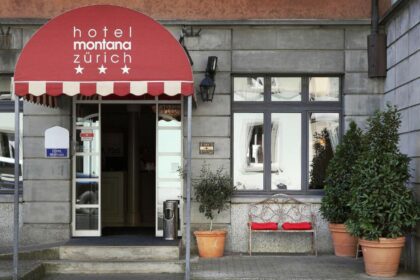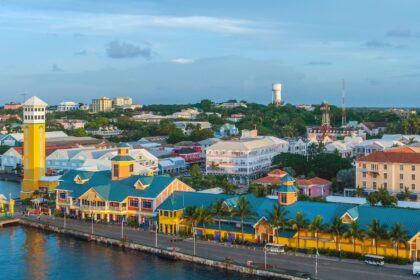Introduction
Nestled just a short drive from Johannesburg, South Africa, the Cradle of Humankind stands as a testament to the rich tapestry of our human history. This UNESCO World Heritage Site is a must-visit destination for travelers seeking a profound and enlightening experience. With its captivating landscapes, archaeological wonders, and a unique blend of history and nature, the Cradle of Humankind offers an unforgettable journey into the roots of humanity.
Historical Significance
The Cradle of Humankind is renowned for its archaeological treasures that provide a window into the evolution of our species. Fossil discoveries in this region have contributed immensely to our understanding of human ancestry, making it a crucial site for paleoanthropologists and historians alike. Visitors can explore the Sterkfontein Caves, where the fossilized remains of hominins such as “Mrs. Ples” and “Little Foot” were unearthed, dating back millions of years. The Maropeng Visitor Centre complements this experience with interactive exhibits, showcasing the milestones of human evolution.
READ ALSO: Johannesburg City Guide and Must-Do Activities
Breathtaking Landscapes

Beyond its historical significance, the Cradle of Humankind boasts stunning landscapes that captivate the senses. Rolling hills, expansive grasslands, and ancient limestone formations create a picturesque setting that invites exploration. Visitors can take guided tours through the area, offering a chance to appreciate the natural beauty while gaining insights into the geological processes that shaped the region.
Rich Cultural Heritage
The Cradle of Humankind is not only a treasure trove of ancient fossils but also a repository of diverse cultures. The local communities surrounding the site add a layer of cultural richness to the visitor experience. Travelers can engage with the vibrant traditions, art, and crafts of the indigenous people, gaining a deeper appreciation for the interconnectedness of humanity throughout history.
Outdoor Activities
For adventure seekers, the Cradle of Humankind offers a plethora of outdoor activities. Hiking trails wind through the landscape, providing opportunities for both novice and experienced hikers to witness the beauty of the region up close. Hot air balloon rides offer a unique perspective, allowing visitors to take in the expansive views from above, with the UNESCO site unfolding beneath like a historical canvas.
Preservation Efforts
Recognizing the importance of preserving this invaluable heritage, ongoing conservation and research efforts are integral to the Cradle of Humankind. Sustainable tourism practices are implemented to ensure that future generations can continue to explore and learn from this remarkable site. Visitors can take pride in knowing that their journey contributes to the ongoing protection and study of our shared human heritage.
In summary, the Cradle of Humankind stands as a beacon of human history, offering a profound and enlightening experience for all who venture there. From its archaeological wonders to breathtaking landscapes, rich cultural heritage, and commitment to preservation, this UNESCO World Heritage Site beckons travelers to embark on a journey that transcends time and connects us to the roots of our existence. A visit to the Cradle of Humankind is not just a trip; it’s a pilgrimage to the very essence of what makes us human.
READ ALSO: South Africa’s Top 5 Must-Visit Places and Activities
Frequently Asked Questions About Cradle of Humankind Exploration
1. What is the Cradle of Humankind?
The Cradle of Humankind is a UNESCO World Heritage Site located near Johannesburg, South Africa. It is renowned for its rich archaeological findings, including fossilized remains that provide insights into the evolution of our species.
2. What are the main attractions at the Cradle of Humankind?
The primary attractions include the Sterkfontein Caves, where significant hominin fossils were discovered, and the Maropeng Visitor Centre, featuring interactive exhibits on human evolution. The region also offers stunning landscapes, hiking trails, and cultural experiences.
3. How old are the fossils found in the Sterkfontein Caves?
Fossils in the Sterkfontein Caves date back millions of years. Notable discoveries include the well-known “Mrs. Ples” and “Little Foot,” contributing to our understanding of early hominins.
4. What can visitors expect at the Maropeng Visitor Centre?
The Maropeng Visitor Centre provides an immersive experience with exhibits on human evolution, interactive displays, and a boat ride showcasing the journey of life on Earth. It serves as an informative and engaging complement to the fossil sites.
5. Are there outdoor activities available at the Cradle of Humankind?
Yes, the region offers various outdoor activities, including hiking trails that showcase the natural beauty of the area. Additionally, hot air balloon rides provide a unique perspective of the landscape.
6. How can I engage with the local communities around the Cradle of Humankind?
Travelers can interact with the vibrant local communities to learn about their traditions, art, and crafts. Supporting local businesses and cultural initiatives is a great way to immerse yourself in the region’s cultural heritage.
7. Is the Cradle of Humankind suitable for families with children?
Yes, the Cradle of Humankind is family-friendly. The Maropeng Visitor Centre, with its interactive exhibits, and outdoor activities make it an educational and enjoyable destination for visitors of all ages.
8. What conservation efforts are in place at the Cradle of Humankind?
Ongoing conservation efforts focus on preserving the site’s archaeological and natural wonders. Sustainable tourism practices are implemented to ensure that the Cradle of Humankind remains a treasure for future generations.
9. How far is the Cradle of Humankind from Johannesburg, and how do I get there?
The Cradle of Humankind is approximately an hour’s drive from Johannesburg. Visitors can reach the site by car or through organized tours offered by various travel agencies.
10. Can I contribute to the preservation efforts of the Cradle of Humankind?
Yes, visitors can contribute by adhering to responsible tourism practices and supporting initiatives that promote the conservation of this UNESCO World Heritage Site. Donations to relevant organizations are also welcomed to aid ongoing preservation efforts.
Conclusion
In concluding the exploration of the Cradle of Humankind, it becomes evident that this UNESCO World Heritage Site is not merely a destination; it is a journey through time, a profound odyssey into the roots of humanity. The combination of archaeological wonders, breathtaking landscapes, and a rich cultural tapestry creates an experience that resonates with visitors on a deep and meaningful level.
The significance of the Sterkfontein Caves and the Maropeng Visitor Centre cannot be overstated, as they unveil the mysteries of human evolution through fossil discoveries and engaging exhibits. This exploration is not confined to the past; it serves as a reminder of our shared heritage and the interconnectedness of all human beings.
The Cradle of Humankind extends beyond its historical treasures, inviting travelers to immerse themselves in the natural beauty of the region. Hiking trails, hot air balloon rides, and encounters with local communities add layers of richness to the journey, ensuring a well-rounded and fulfilling experience for every visitor.
Moreover, the commitment to conservation and sustainable tourism practices underscores the responsibility we all share in preserving this invaluable heritage. By participating in the exploration of the Cradle of Humankind, travelers become stewards of a legacy that transcends individual lifetimes, contributing to the ongoing protection and study of our collective human story.
In essence, a visit to the Cradle of Humankind is more than a checkmark on a travel itinerary; it is an opportunity to connect with our past, appreciate the present, and safeguard the future. As the sun sets over this remarkable landscape, the echoes of humanity’s journey linger, leaving indelible imprints on the hearts and minds of those fortunate enough to have explored this extraordinary cradle of our existence.
In another related article, Drakensberg Mountains Hiking Heaven: Guide and Safety Tips







